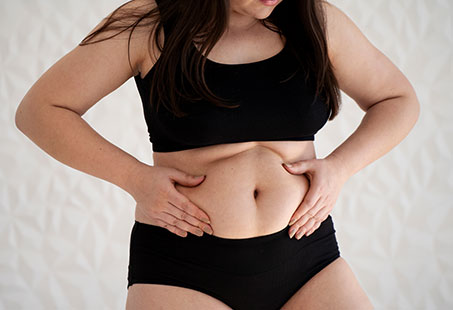A reverse tummy tuck is the opposite of a traditional tummy tuck in that it targets the upper abdominal area instead of the lower one.
Usually, it’s the lower abdomen that’s more problematic because of the hanging skin and excess fat. However, occasionally, the upper abdomen can have similar concerns. In a case like this, you can benefit from this type of tummy tuck.
But before you do that, it’s important that you understand exactly what this surgery entails and whether or a not a traditional tummy tuck might be better for you.
What Is A Reverse Tummy Tuck?
Also known as a reverse abdominoplasty, reverse tummy tuck is a cosmetic surgery that removes excess skin and/or repairs partially separated abdominal muscles (diastasis recti) in the upper abdomen.
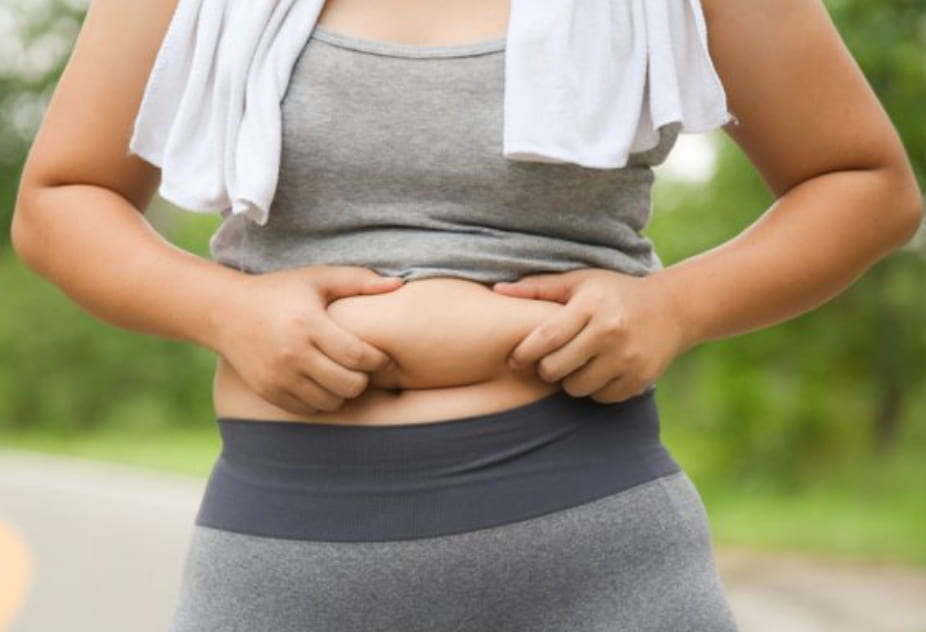
To clearly demarcate the upper and lower abdomen, you only need to look at your belly button.
If you’ve skin hanging above it, you’re a candidate for reverse tummy tuck, and if it’s below, a traditional tummy tuck may be better for you.
If you’re planning to get other surgeries as well, such as breast augmentation, breast reduction, breast lift or liposuction, it may be possible for you to combine it with this type of tummy tuck.
And even if you have resistant fat pockets in the lower abdomen, a liposuction may be able to address that in the same surgery.
Who’s A Candidate For Reverse Tummy Tuck?
To be an ideal candidate for a reverse tummy tuck, you need to:
- Have loose skin in the upper abdomen only (could be due to weight loss or pregnancy) and a tight lower abdomen.
- Have a partial diastasis recti in the upper abdomen only.
- Be in good health and a body mass index (BMI) below 30.
- Be a non-smoker.
Of course, in addition to the above, it’s extremely important for you to have realistic expectations from this surgery. You should consider looking at the before and after photos of other patients to get a better idea.
What’s The Procedure For A Reverse Tummy Tuck?
A reverse tummy tuck usually takes place under general anaesthesia, so you won’t be awake during the procedure.
Once it’s taken effect, your surgeon will begin by making incisions in the inframammary folds – the boundary underneath the lower half of the breasts.
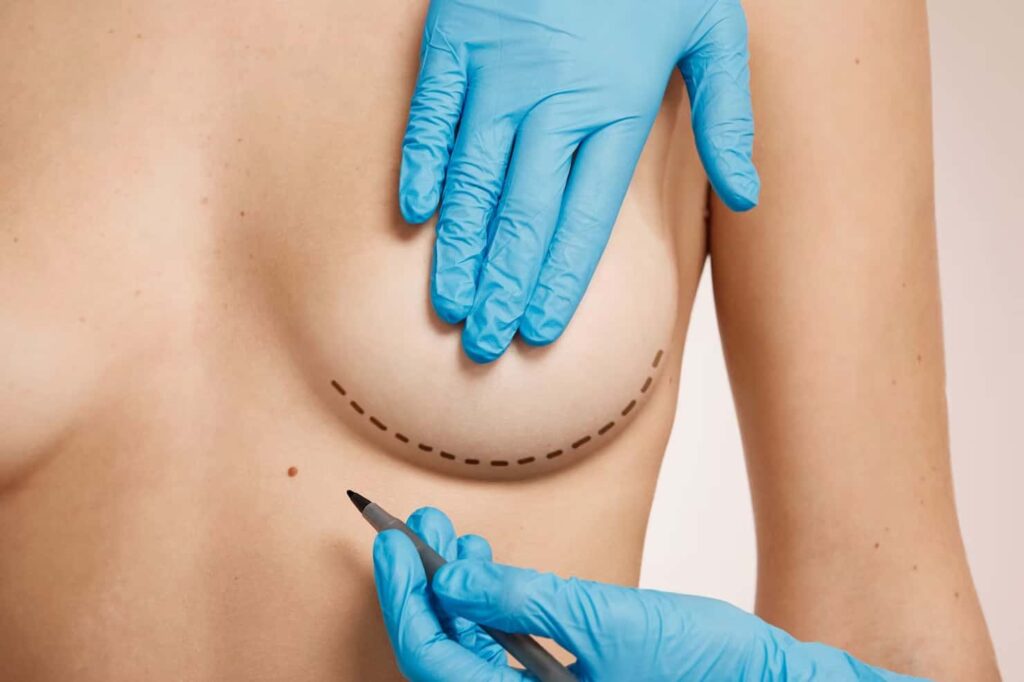
In some cases, however, these incisions extend all the way to the middle of the chest (sternum).
Following that, if you need to get your abdominal muscles repaired, they’ll be sutured. Excess skin will be cut out, and then you’ll be stitched back up.
Here, it should be noted that some surgeons also use this excess skin in the upper abdomen to perform a breast augmentation.
The skin can act as a substitute for an implant (although the results won’t be as dramatic), and even fat can be grafted there for more fullness.
And if you already have implants, this excess skin can also be used to create a support structure for them. Additionally, as mentioned above, you can also get liposuction or other lifting procedures with it.
The reverse tummy tuck can take around 2-4 hours, but it can vary depending on any other surgeries you’re having. Once you’re done, you’ll need about 1-2 weeks to recover.
How Painful Is A Reverse Tummy Tuck?
Reverse tummy tuck surgery is not painful because you’ll be under anaesthesia.
However, after the surgery, you might feel pain because of the surgery and when trying to move around (pain may also be more due to muscle repair).
But that can be managed with painkillers, which your doctor might prescribe you.
Just make sure to follow the aftercare instructions of your surgeon as far as wearing your compression garment and your physical activities go.
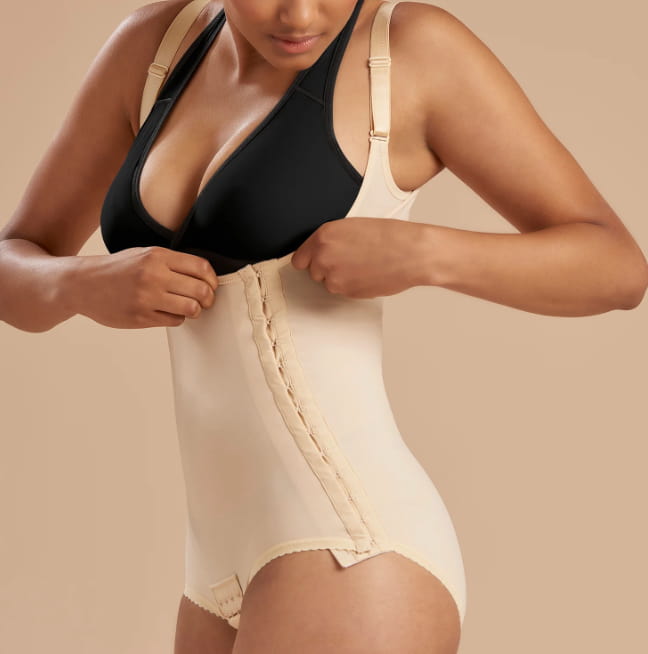
Your pain should get better with time, but if it worsens or even persists, you must consult your doctor.
How Long Does A Reverse Tummy Tuck Last?
Reverse tummy tuck results are permanent because the loose skin is cut out from the body. However, your skin can re-stretch as a result of weight fluctuations or pregnancy (which is why surgeons recommend this surgery after you’ve completed your family).
Also, keep in mind that your skin can naturally change due to ageing and the effects of gravity. But your abdominal contour will appear tauter with the surgery than without it.
Is A Reverse Tummy Tuck Worth It?
A reverse tummy tuck can significantly improve the contour of your upper abdomen, making it look well-toned and smoother. Therefore, it can be worth it.
But you must keep in mind that a reverse tummy tuck is not for weight loss. It will only reshape a part of your body. Still, if that’s your goal, it can be very effective.
What Are The Cons Of A Reverse Tummy Tuck?
One of the biggest downsides of a reverse tummy tuck can be its scar. While your incisions are likely to stay hidden underneath your bra, there’s a higher risk of them thickening.
According to a study published in the Annals of Burns and Fire Disaster, because of mechanical tension, scars in parts of the body, like the sternum, are quite often hypertrophic (thick and raised).
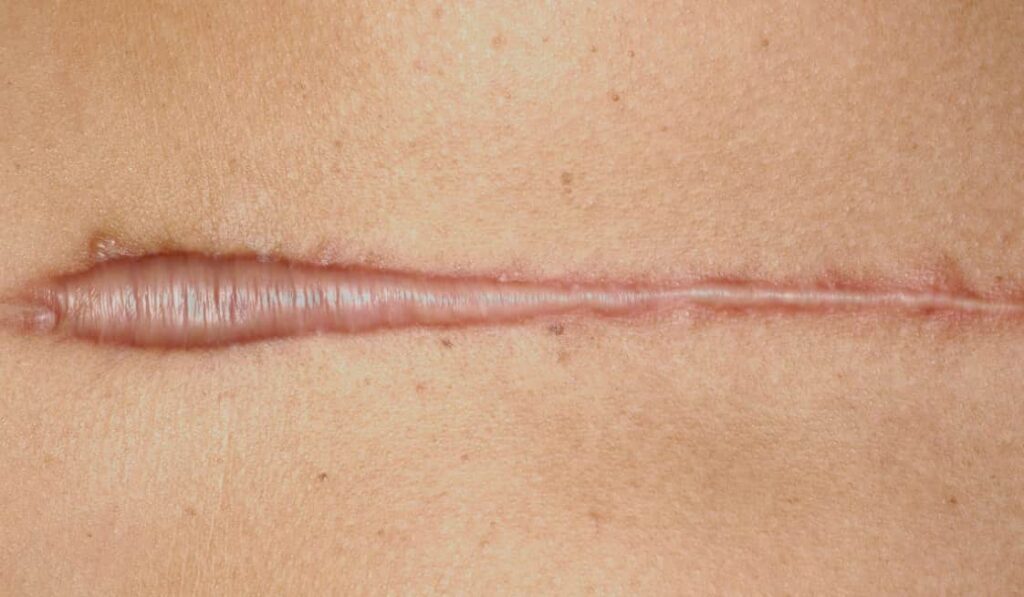
Other than that, even though it’s the very nature or the surgery, another of its problems is that it only focuses on the upper abdomen. This is even when people usually have problems in the lower areas of their abdomen.
This doesn’t mean that you can only ever have one tummy tuck (either in the upper or lower abdomen). It’s just that you won’t be able to have the two at the same time.
If poor skin quality is an issue across your entire abdomen, your surgeon will likely recommend a surgery for the lower abdomen first. And you can get one for the upper abdomen after 6-12 months.
How Much Is A Reverse Tummy Tuck?
In the UK, a reverse tummy tuck can cost you anywhere from £5,000 to £11,000. You can expect a reverse tummy tuck to be slightly more expensive than a traditional tummy tuck because not everyone offers it.
Moreover, you should know that the prices can change depending on the:
- Location of the clinic
- The expertise of the surgeon
- Type of anaesthesia
- Aftercare (medicine, compression garment)
- Additional surgeries
You can, however, save on the UK cost by becoming a medical tourist. In Turkey, you might be able to get a reverse tummy tuck starting from £2,500.
It’s not because of unregulated or poor healthcare in the country. It’s because of the lower cost of living and currency exchange.
What Is The Difference Between A Tummy Tuck And Reverse Tummy Tuck?
The main difference between a traditional tummy tuck (or full abdominoplasty) and reverse tummy tuck is that the former targets the lower abdomen while the later focuses on the upper abdomen.
Other than that, in a full tummy tuck, a complete diastasis recti repair is possible, while it can only be partially sutured in the reverse abdominoplasty.
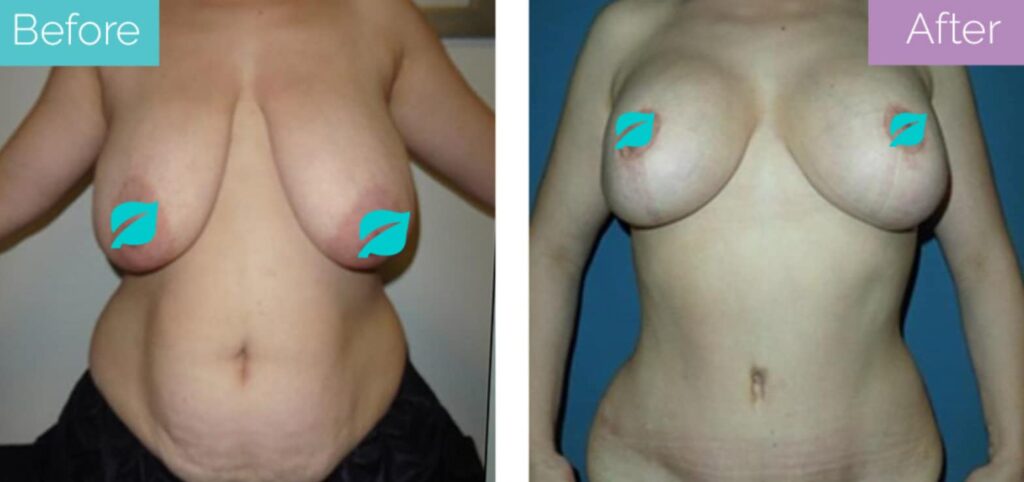
Also, there are, of course, differences in the placement of the incisions. In a traditional tummy tuck, it’s either made across the abdomen (mini tuck) or from hip to hip (full tuck). In a reverse, it’s under the breast fold, sometimes meeting at the sternum.
For more clarity, here’s a summary of the differences between the two procedures.
| Tummy Tuck | Reverse Tummy Tuck | |
| Procedure | Remove excess skin and fat from the lower abdomen and repair torn abdominal muscles | Get rid of excess skin from the upper abdomen and partially repair torn abdominal muscles |
| Candidates | Poor skin laxity and resistant pockets of fat in the lower abdomen and diastasis recti | Poor skin laxity and partial diastasis recti in the upper abdomen |
| Anaesthesia | Usually general | Usually general |
| Downtime | 2-3 weeks | 1-2 weeks |
| Results | Permanent | Permanent |
| Cost | UK: £4,000-£10,000 Turkey: £2,000-£2,300 | UK: £5,000-£11,000 Turkey: ~£2,500 |
| Complications | Infection, bleeding seroma, hematoma, blood clots, scarring, delayed wound healing, pain, numbness, etc. | Infection, bleeding, seroma, hematoma, thick and raised scars, etc. |
Conclusion
A reverse tummy tuck can help you improve the appearance of your upper abdomen. It can especially help you achieve a more toned and even look if your lower abdomen is already tight.
But if that’s not the case, you should remember that you might need a separate full abdominoplasty for it (only for the lower abdomen).
In any case, it’s important that you consult a board-certified medical professional who’s experienced in performing this surgery, especially if you want to combine it with other procedures as well.
Reviewed and approved by Prof. Dr. Fuat Yuksel
